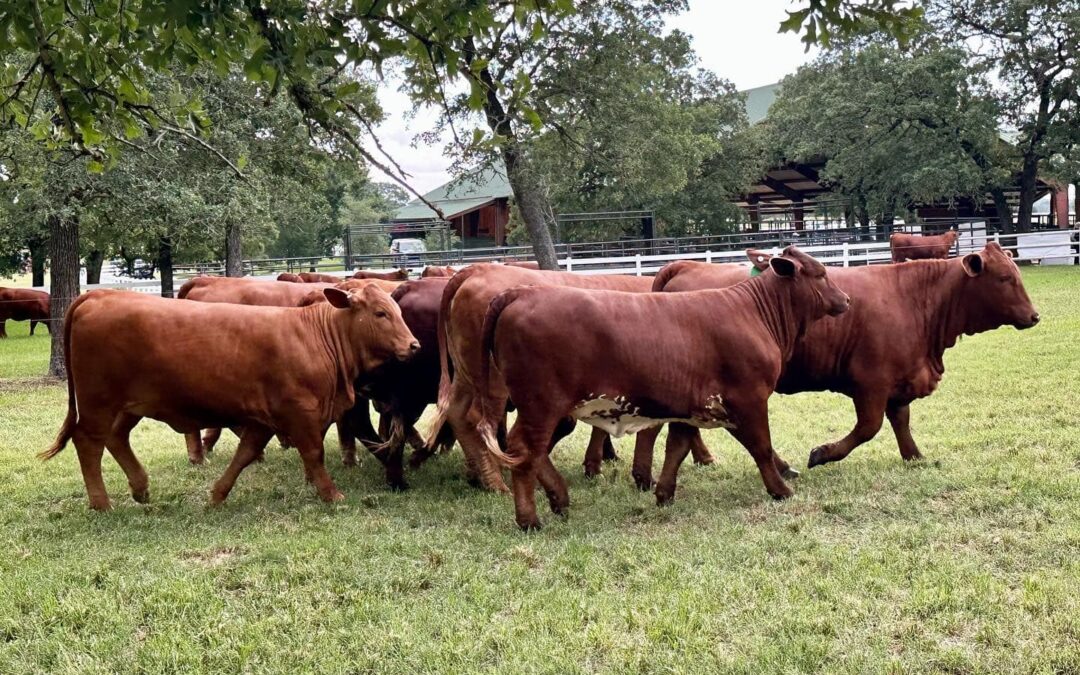In the world of Beefmaster cattle, genetic diversity underlies the breed’s versatility and overall excellence. While all Beefmaster cattle share certain hallmark traits, there are subtle variations that result in different types within the breed. This article aims to delve into these nuances to provide a deeper understanding of the different types of Beefmaster cows.
The Foundations of Beefmaster Cattle
Before we delve into the specifics, let’s revisit the breed’s foundations. Beefmaster cattle are a composite breed, combining approximately 50% Brahman, 25% Hereford, and 25% Shorthorn genetics. The goal was to unite the strengths of these three breeds to create cattle that are fertile, hardy, efficient, and adaptable. Within the Beefmaster breed, there is a range of phenotypic variation reflecting their diverse genetic background.
Types of Beefmaster Cows: An Overview
While there aren’t officially designated “types” within the Beefmaster breed, we can discern variations based on genetic influence and certain trait emphases. These differences usually fall along two lines: Brahman-influence and British-influence.
Brahman-Influenced Beefmaster Cows
The Brahman-influenced Beefmasters showcase more of the traits inherited from their Brahman ancestors. These cows tend to have more prominent humps, loose skin (or dewlap), and longer ears – traits associated with Brahman cattle.
They exhibit a high degree of heat tolerance, disease and insect resistance, and adaptability to harsh environments. Brahman-influenced cows also usually have a higher capacity for fat deposition, enabling them to better endure periods of forage scarcity.
British-Influenced Beefmaster Cows
British-influenced Beefmasters show stronger traits from their Hereford and Shorthorn heritage. They often have a more moderate frame, less hump, tighter skin, and shorter ears.
They tend to do exceptionally well in cooler climates and exhibit excellent maternal abilities. These cows are also often noted for their marbling ability and overall carcass quality, traits more associated with British breeds.
Selecting Your Type of Beefmaster Cow
Choosing between Brahman-influenced or British-influenced Beefmasters often depends on your ranch’s specific goals and environmental conditions.
If you’re operating in a harsh, hot climate where disease and insect pressure is high, Brahman-influenced Beefmasters might be the better choice. If your emphasis is on carcass quality or if you’re in a cooler environment, British-influenced Beefmasters might be more suitable.
Keep in mind that these are general observations, and there’s plenty of variation within the breed. Additionally, Beefmasters of all types adhere to the Six Essentials outlined by Tom Lasater: weight, conformation, milk production, fertility, hardiness, and disposition.
The Power of Genetic Testing
Modern breeders can turn to tools like genetic testing to understand the specific genetic makeup of their cattle better. These tests can identify genetic markers associated with various traits, providing a clearer picture of the animal’s genetic potential.
Conclusion
Understanding the different types of Beefmaster cows enhances our appreciation for the breed’s versatility and adaptability. Whether they lean more towards their Brahman or British ancestry, Beefmasters continue to excel as a premier breed for beef production. Knowledge of these differences enables breeders to make informed decisions that best align with their operation’s unique needs and goals. The flexibility within the Beefmaster breed offers exciting opportunities for breeders to further the legacy of this exceptional breed.
